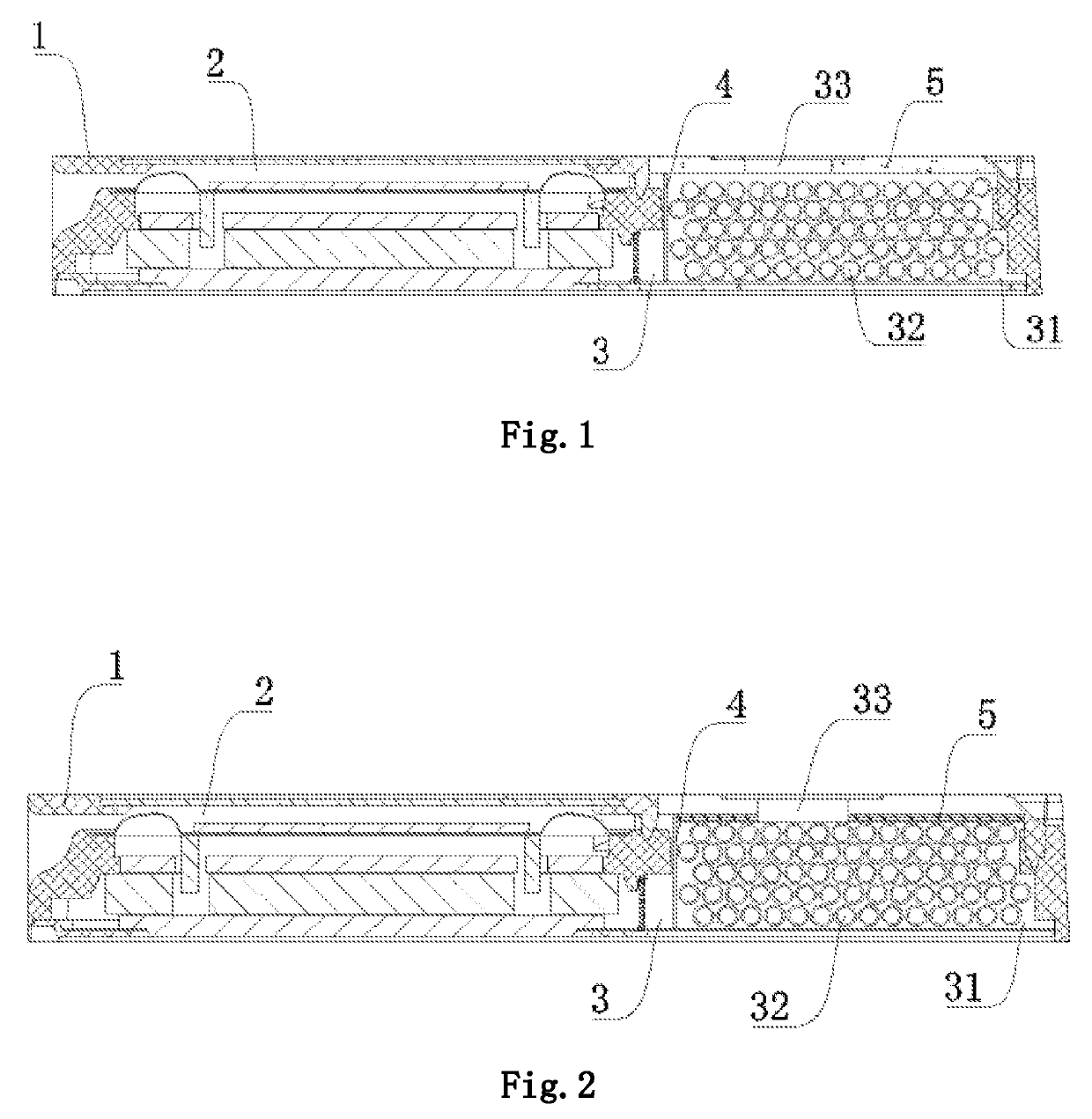Speaker module
a speaker module and speaker technology, applied in the field of electroacoustic products, can solve the problems of difficult to effectively utilize the rear acoustic cavity space of the speaker, inability to meet the debugging and calibration requirements of the acoustic performance of the micro speaker industry, and the improvement effect of the acoustic performance of the speaker is significantly restrained, so as to enhance the antistatic capability improve the electrostatic properties of the module housing, and increase the fill rate of the sound
- Summary
- Abstract
- Description
- Claims
- Application Information
AI Technical Summary
Benefits of technology
Problems solved by technology
Method used
Image
Examples
first embodiment
The First Embodiment
[0025]Referring to FIG. 1, the speaker module according to the present embodiment comprises a module housing 1 and a speaker unit accommodated in the module housing 1. The speaker unit separates a module cavity encircled by the module housing into two cavities, namely a front acoustic cavity 2 and a rear acoustic cavity 3, and an insulating member 4 is disposed in the rear acoustic cavity 3, the insulating member 4 separates the rear acoustic cavity 3 into an accommodating cavity and a sound absorbing cavity 31, the sound absorbing cavity 31 is filled with sound absorbing particles 32, and a filling opening 33 is disposed on the module housing 1 at the position of the sound absorbing cavity 31, and an antistatic material is added into the housing material of a portion of the module housing 1 constituting the sound absorbing cavity 31. Preferably, the antistatic material may be added into the housing material of a portion of the module housing that corresponds to ...
second embodiment
The Second Embodiment
[0031]Referring to FIG. 2, the structure of the speaker module of the present embodiment is substantially the same as that of the first embodiment, except that the antistatic material 5 is coated on the inner surface of the portion of the module housing 1 constituting the filling opening 33. Preferably, the antistatic material 5 may be coated on the inner surface of the portion of the module housing 1 corresponding to the filling opening 33. Such structure can increase the surface conductivity of the module housing 1, so that the surface resistance of the area coated with the antistatic material 5 is ≤1012Ω, thereby achieving the purpose of improving the electrostatic properties of the module housing 1.
PUM
 Login to View More
Login to View More Abstract
Description
Claims
Application Information
 Login to View More
Login to View More - R&D
- Intellectual Property
- Life Sciences
- Materials
- Tech Scout
- Unparalleled Data Quality
- Higher Quality Content
- 60% Fewer Hallucinations
Browse by: Latest US Patents, China's latest patents, Technical Efficacy Thesaurus, Application Domain, Technology Topic, Popular Technical Reports.
© 2025 PatSnap. All rights reserved.Legal|Privacy policy|Modern Slavery Act Transparency Statement|Sitemap|About US| Contact US: help@patsnap.com

